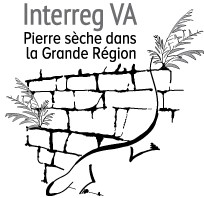Case Study
Dry stone in the Greater Region. Protection, restoration and enhancement of a heritage of high natural and landscape value.
Contact name
Amandine Schaus
Institution name
Nature Park Deux-Ourthes
Region & country
Wallonia - Belgium, France (Lorraine), Luxembourg, Greater Region
Summary
In order to promote knowledge and perception by all, inventories of dry stone walls are carried out on the territory of the Greater Region, as well as restoration actions by professionals and training related to the transmission of know-how. intended for multiple audiences are set up on selected walls.
Communication on the project, a “showcase” landscaped site and skills transfer between partners and for residents and professionals will increase overall knowledge of this heritage that is welcoming to biodiversity and still current in its uses. The project intends to promote the preservation of the walls from a natural and cultural point of view, but also to ultimately promote a collaborative economy for dry stone in the Greater Region.
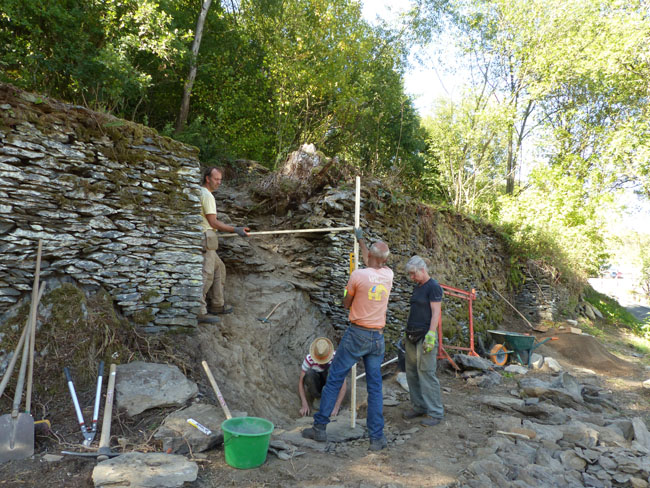
Training in the technique of dry stone, Sertomont à Houffalize (2018)
PNDO
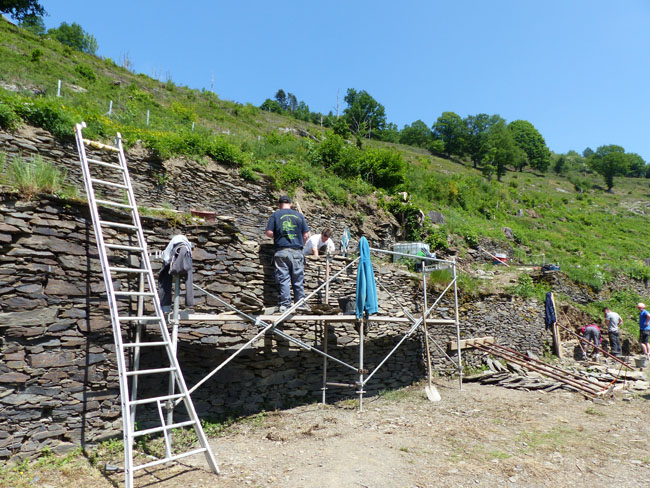
Training in the technique of dry stone, l’Athénée de La Roche-en-Ardenne (2018)
PNDO
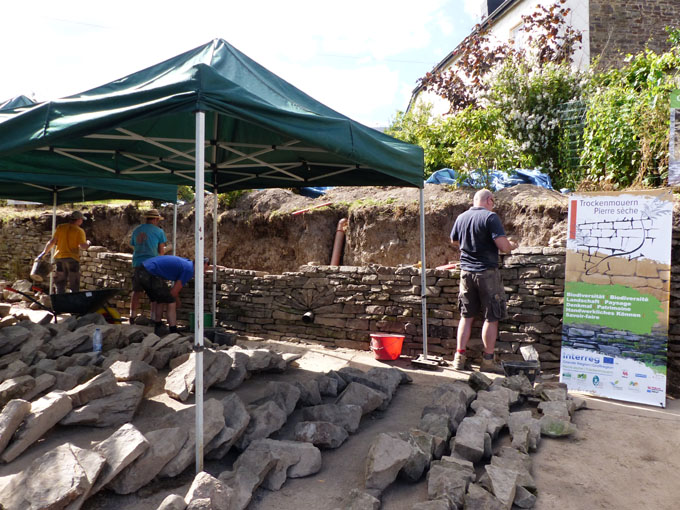
Training in the technique of dry stone, Hubermont in Roche-en-Ardenne (2019)
PNDO
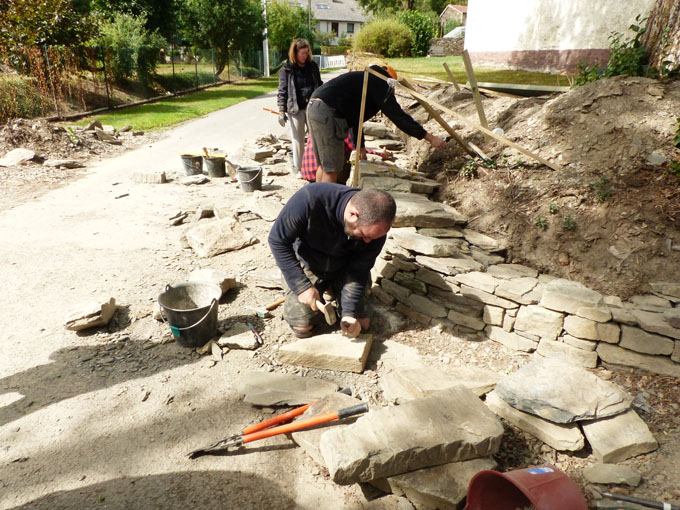
Training in the technique of dry stone, Ourthe à Gouvy (2020)
PNDO
Background of the project
The know-how was in very clear decline, even in virtual disappearance on all the territories. The constructions, while they still exist and sometimes in a very present way, are often forgotten or distorted by lack of competence and of understanding of their structure and their interest (ecological, practical use, landscape and heritage).
– Need for training and trainers
– Lack of skilled craftsmen
– Need to improve the skills of the various actors, including among prescribers and order givers
– Need to exchange and compare knowledge and techniques from different countries
– Promotion of a reopening of landscapes towards traditional rural areas
– Rediscover the technique, the heritage and the prospects for sustainable development that this type of construction brings
Solution and actions taken
– Inventories of the walls, state of conservation, awareness of the general public, municipalities and owners
– Training for the general public, municipalities, professionals
– Organization of a qualification of trainers and professionals
– Development of sites rich in dry stone intended to become a “dry stone showcase”
– Restoration of the wall followed by the nature park.
– Communication and dissemination of actions and results
– In terms of inventories, a worksheet was developed in order to standardize the analysis of the walls in the different areas of the project.
– For training, skills have been pooled to maximize results by collaborating with two specific partners
– Networking of actors and numerous meetings between partners, actors in the field and professionals took place.
Other institutions or parties involved
We involved 6 other project partners (Wallonia: Nature Park Haute Sûre Forêt d’Anlier, “Paix-dieu” heritage trades center (AWaP), France: Regional Nature Park Lorraine, Dry stone builders, Luxembourg : natur & ëmwelt-Fondation Hëllef fir d’natur, Natur & géoPark Mëllerdall), as well as 12 methodological partners (BE-LU-FR-DE). Other resource persons or associations were involved to varying degrees such as municipalities, work-based training companies, building professionals, schools, …
Results
The project is still ongoing, and interest in preserving dry stone heritage and creating new walls is greater than before the project. Private individuals are coming together to save walls in their village, registrations for various training and restoration projects, requests for information concerning restoration possibilities which are also reaching us outside the boundaries of the natural park.
Challenges
Project well received, but sometimes we note a lack of interest in technology or heritage, the difficulty of training municipal officials, the little attention paid to actions allowing to save the old existing walls or not to destroy them, the lack of recovery and reuse of local stone, and still too often the fear of the lack of stability of the technique (in comparison with cement, gabions or the use of stabilized sand within the walls).
Lessons learned
Working as part of a European project is very rewarding. The regulations specific to each country can sometimes create difficulties and slow down the taking of initiative, but meeting and collaborating with partners from different countries make it possible to exchange and confront the different realities on the ground and to optimize the work of reflection, even if the geographical distance sometimes imposes certain limits.
Contact name
Amandine Schaus
Institution name
Nature Park Deux-Ourthes
Website(s)
